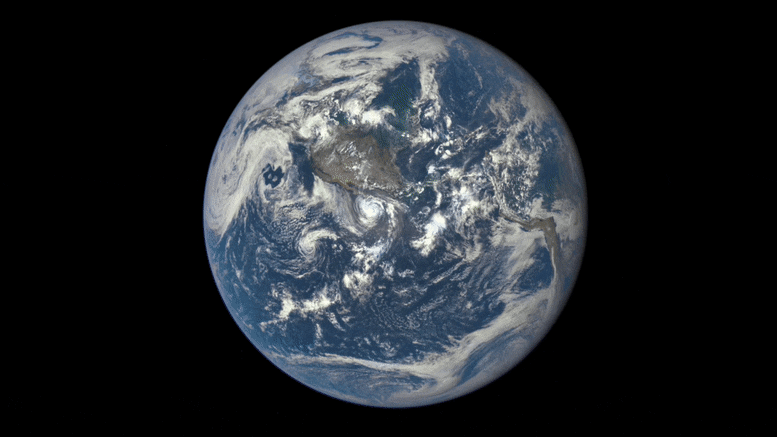
Diese Animation zeigt echte Satellitenbilder der sonnenbeschienenen anderen Seite des Mondes, während er zwischen der Earth Polychromatic Imaging Camera (EPIC) und dem DSCOVR-Raumschiffteleskop und der Erde in einer Entfernung von einer Million Meilen vorbeizieht. Bildnachweis: NASA/NOAA
Obwohl es gefälscht aussieht, ist dieses virale Filmmaterial des Mondes, der die Erde umkreist, tatsächlich echt. Es ist einfach nicht neu, obwohl es diese Woche wieder die Runde gemacht hat; Er wurde tatsächlich vor über 6 Jahren gefangen genommen.
Im Jahr 2015, ein[{“ attribute=““>NASA camera aboard the Deep Space Climate Observatory (DSCOVR) captured this unique series of images displaying the ‘dark side’ of the moon. The ‘dark side’ of the moon is often used to refer to the hemisphere of the moon that is facing away from Earth. However, it is more properly called the ‘far side’ as it is exposed to an equal amount of sunlight as the side facing Earth. We can never view the ‘far side’ from Earth due to a phenomenon called tidal locking, which occurs when an astronomical body takes the same amount of time to complete a full rotation around its axis and fully orbit around its partner.
Although DSCOVR’s primary purpose is to monitor solar winds for the National Oceanic and Atmospheric Administration (NOAA), the satellite also houses NASA’s Earth Polychromatic Imaging Camera (EPIC) which captured these images. This four-megapixel CCD camera and telescope maintains a constant view of Earth as it orbits and takes 13-22 images every day.
In order to capture Earth’s ‘natural color’, NASA combines three different monochrome exposures taken 30 seconds apart. The final combined image has a slight green offset to the right of the moon and thin blue and red offsets to the left of it which is due to the Moon’s movement between each exposure.
If you wish to view more images taken by EPIC, NASA publishes daily color images of different views of the Earth as it rotates throughout the day.

Freiberuflicher Alkoholiker. Begeisterter Webfanatiker. Subtil charmanter Zombie-Junkie. Ergebener Leser.
You may also like
-
Österreichische Gletscher ziehen sich „mehr denn je“ zurück: Messung
-
Von der NASA ins All geschickte Samen, Forstdienst kehrt zur Erde zurück und erschafft eine neue Generation von „Mondbäumen“
-
Wie die Vereinigten Arabischen Emirate ein Raumschiff zum Mars schickten – beim ersten Versuch
-
Die seltensten Wolken der Welt erscheinen über der Bucht von San Francisco
-
2023: Massive Menschenmassen in Abuja, als APC-Frauen und -Jugendliche eine Kundgebung für die Präsidentschaft von Tinubu/Shettima abhalten

